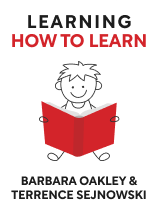

This article is an excerpt from the Shortform book guide to "Learning How to Learn" by Barbara Oakley and Terrence Sejnowski. Shortform has the world's best summaries and analyses of books you should be reading.
Like this article? Sign up for a free trial here .
What is interleaving? How can it help you learn?
Introducing variety into your studies helps you leverage your brain’s information storage processes. Interleaving is an effective way to diversify your studies. It’s basically using an assortment of problem-solving techniques rather than sticking with the same one all of the time.
Keep reading to learn more about interleaving and how it can boost your learning.
Interleave Your Study Problems
An effective way to introduce variety into your studies is by interleaving. What is interleaving? Learning How to Learn authors Oakley and Sejnowski explain that “interleaving” means practicing an assortment of problems covering the full range of problem-solving techniques you’ve learned, instead of only practicing one technique at a time. For example, let’s say you’re learning arithmetic. You’ve already learned how to add and subtract, and now you’re studying multiplication. But when you study, you mix in some addition and subtraction problems to practice along with your multiplication problems.
The authors say the reason this helps is that deciding what technique to use on a given problem is just as important (and sometimes more difficult) than applying the technique to solve the problem. Mixing up your studies with interleaving gives you practice recognizing different kinds of problems that require different approaches. This gives you a better understanding of the context in which each solution method is applicable, which, in turn, helps you relate the different methods to each other. These additional connections in your mind make all the techniques more accessible in your memory.
(Shortform note: Other studies of the effectiveness of interleaving corroborate Oakley and Sejnowski’s advice, highlighting that interleaved study promotes better retention, especially in the long term. In one study, students who were assigned interleaved review problems scored better on tests than students whose review assignments did not include interleaving. Further, if the test was delayed for 30 days, average test scores dropped about 18 percentage points for students who did not practice interleaving, but only six percentage points for students who practiced interleaving.)

———End of Preview———
Like what you just read? Read the rest of the world's best book summary and analysis of Barbara Oakley and Terrence Sejnowski's "Learning How to Learn" at Shortform .
Here's what you'll find in our full Learning How to Learn summary :
- How anyone can learn to master any subject
- Study tactics that you can use to excel in whatever you’re learning
- A look at the neuroscience behind how you learn






